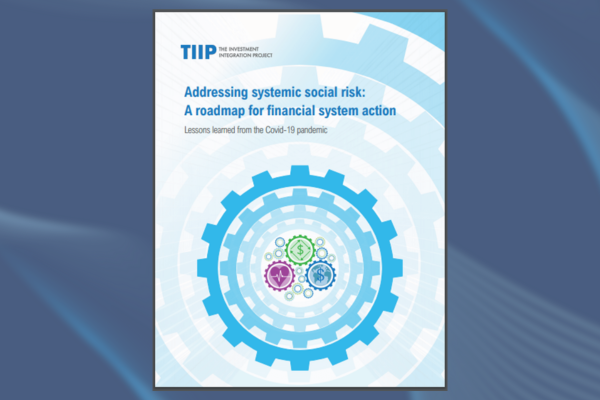Resource Moves Investors from ESG integration to managing systemic risks
New York, NY, October 13, 2020 – Instability and unrest across all aspects of our lives–from financial markets to public health to racial reckonings to the environment–have forced investors to realize global systems are inextricably interconnected. Many have been and are responding to this need by considering environmental, social and governance issues (ESG) within their investments. Yet the compounding crises of 2020 show that ESG considerations are no longer enough. Investors must instead push themselves to think bigger and implement system-level investment strategies.
“The varied events of 2020 have clearly uncovered the need to evaluate investment risks in a new way,” said Tim Williams, Director of Education Initiatives, Money Management Institute (MMI). “By applying a systems-level lens to investing, we can better evaluate the longer-term impacts on risk and return – but investors need the resources and perspectives to help them decipher this new paradigm.”
MMI and the Integration Investment Project (TIIP), sponsored by the High Meadows Institute and Thornburg Investment Management, have released a new resource to support investors in their transition from an ESG-focused investment strategy to one that incorporates system-level investments. The resource, “Graduating from ESG to Systems,” gives an overview of the differences of the approaches and outlines seven scenarios of investors confronting and overcoming obstacles in their transition to system-level investment. The report is co-authored by Steve Lydenberg, Robert Dannhauser, and William Burckart.
“As active investors, we hear a lot of entreaties around ESG and always seek to better manage social and environmental risks for our clients in their portfolios,” said Jason Brady, President and CEO of Thornburg Investment Management. “With this report, MMI and TIIP outline steps that investors can take to ensure we effectively grapple with global challenges.”
“Our clients, even those who have already fully adopted an ESG approach, are always looking for ways to level-up their strategies for grappling with social and environmental challenges,” said Burckart, TIIP’s President and co-founder. “‘Graduating from ESG to Systems’ will be a great resource in our work and help investors adopt the systems-level approaches they need.”
The seven scenarios, while hypothetical, are true to life and are designed to help long-term investors transition their operations to better manage social, financial, and environmental systemic risks. The stories include: a pension fund; a diversified financial services firm; a foundation; a family office; an insurance company; a private equity firm; and an investment consultant. Each tracks them from the beginning of their journeys up to fully adopting systemic strategies that can contend with systemic challenges as diverse as climate change, income inequality, and the lack of social and environmental data in the financial markets.
“The next stage in ESG integration for investors is moving beyond simply factor analysis to understand how firms are managing their longer term systemic impacts on issues like climate change and how their strategy anticipates and considers this.” said Chris Pinney, CEO of the High Meadows Institute. “’Graduating from ESG to Systems Scenarios’ provides practical advice for investors on how to do this efficiently and effectively.”
Read the full report here.



